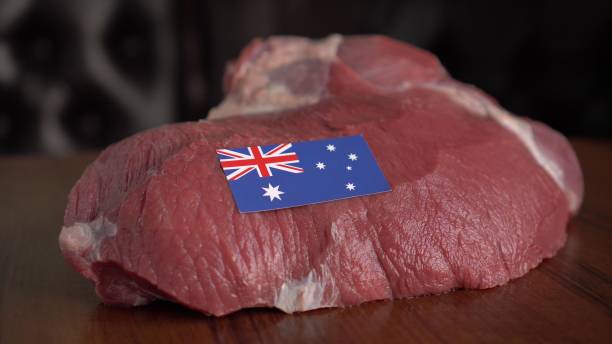Source: Foodmarket
May 3, 2024 - Australia’s beef/veal exports for April rose a whopping 46.2% year-on-year to 105,367 mt (33,304 mt increase), narrowly missing record highs last seen in 2015, data from the Department of Agriculture, Fisheries, and Forestry (D.A.F.F) indicated.
Industry players initially anticipated that Australia would break its April export beef/veal record this year. However, the latest Monthly Australian Meat Export figures fell short by 7,916 mt to surpass the previous record set at 113,283 metric tons, primarily due to lower volumes to key customer China.
The shorter working month due to Easter and ANZAC Day closures typically result in a significant decline in April's volumes compared to March. However, limited US export supplies over production woes prompted Australia to fulfil much of the Asian customer's demand. Export volumes only slipped 1,207 mt month-on-month (1.1%). March 2024's exports stood at 106,573 mt.
Most Australia’s key export destinations saw gains apart from China.

Notably, the US continued to surpass Japan as the key export destination for Australia. Exports to the US were recorded at to 27,257 mt, surging 117% y-o-y or 12,547 mt, holding 2nd place to the record highs last seen in 2015. Demand for grinding material used in burgers and sausages remained firm during the summer barbecue season. Beef/veal volumes to the US East Coast were recorded at 20,812 mt, while exports to the US West Coast amounted to 6,445 mt.
Exports to Japan in April reversed slightly from the previous month’s falls, posting a modest gain of 3.4% (724 mt) to 21,731 mt, but the weak yen curtailed some of the buying appetite. In the absence of US supplies, exports to Japan jumped 42.7% or 6,506 mt compared to the same period last year.
In the “Other Asia” section which includes China, exports fell 12.2% m-o-m (4,148 mt decrease) to 29,842 mt. Demand for Australian beef has been sluggish due to poor end user Chinese demand, high inventories, and robust domestic production. This also indicated a 18.6 % y-o-y increase, but this figure was largely supported by the increase of exports to Indonesia post import permit issues seen earlier in the year.
Another key importer in the Asian Pacific region.











